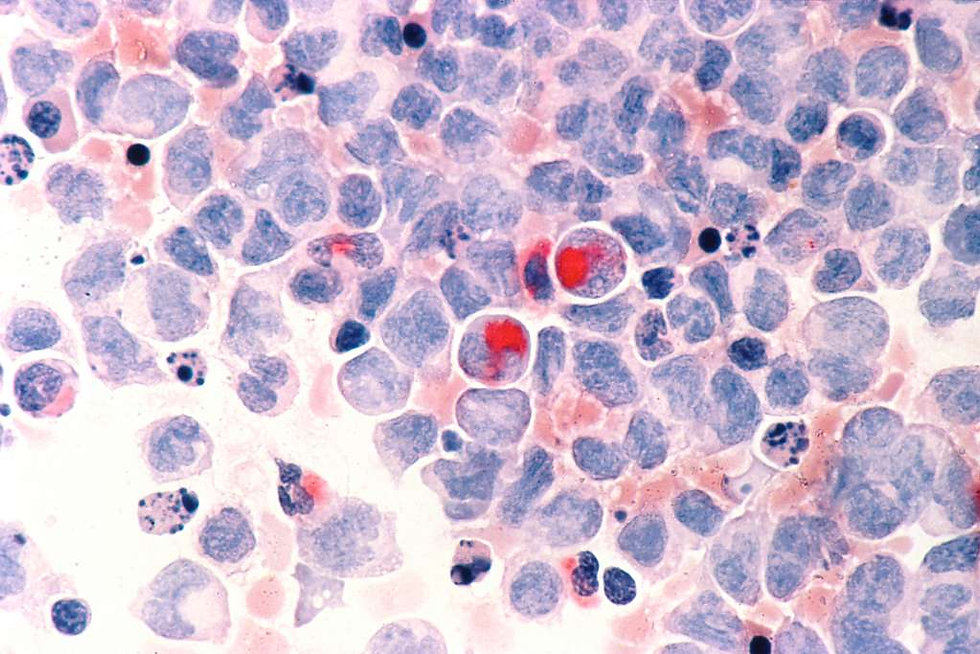Hepatitis B and its Association with Liver Cancer
- Raivath Mukherjee
- Apr 20
- 2 min read
Updated: Aug 22
Shriya Arunkumar

Hepatitis is a medical condition characterized by the inflammation of the liver. The most common type, hepatitis B, is a liver infection caused by the hepatitis B virus (HBV), which is transmitted from person to person through infected blood, semen, or other bodily fluids. HBV attacks liver cells, causing the otherwise soft organ to harden. Damage to liver cells can make them malignant (cancerous). This is why chronic hepatitis B patients are tested twice a year for liver cancer. Patients are chronically diagnosed upon testing positive for over six months.
Increased risk of hepatitis B applies to infants of mothers with the virus who undergo blood exchange, individuals who share the equipment, those who are diagnosed with hemodialysis and hepatitis C, and diabetic patients. This can also extend to healthcare professionals who are exposed to blood daily. Fortunately, there are prevention methods that can be implemented to reduce one’s risk of contracting hepatitis B, for example, wearing gloves when physically handling someone’s open wounds or other blood sources. Furthermore, the likelihood of contracting hepatitis B can be minimized by avoiding sharing personal items like toothbrushes.
Despite the lack of a routine screening option for liver cancer, detecting hepatitis B, the prominent cause, is possible through vaccinations and examinations. Hepatitis B vaccinations are typically provided to infants in three doses between birth and the six-to-eight-month range. However, individuals across all age ranges, including the immunocompromised, can receive this vaccine. Additionally, adults should get screened at least once in their lifetime. Pregnant women should get screening testing for hepatitis each pregnancy to avoid birth complications.
Essentially, hepatitis B awareness is imperative, as without early detection, it can cause liver cancer. Effects associated with liver cancer include unintentional weight loss due to appetite loss, upper abdominal pain and swelling, jaundice, and extreme fatigue. Chronic infection with HBV increases one’s risk of liver cancer, as it occurs when liver cells (hepatocytes) develop DNA mutations. As a result of altered instructions from these mutations, these cells multiply uncontrollably to form a malignant tumor or mass of cancerous cells. Spreading awareness and implementing prevention techniques can help minimize the risk of developing liver cancer.
References
“Hepatitis B | HBV .” MedlinePlus, U.S. National Library of Medicine, medlineplus.gov/hepatitisb.html. Accessed 29 Dec. 2024.
Hepatitis B and Your Liver, www.hepb.org/assets/Uploads/Hepatitis-B-and-your-Liver.pdf. Accessed 29 Dec. 2024.
“Liver Cancer Prevention and Screening.” Prevent Cancer Foundation, 18 Sept. 2024, preventcancer.org/preventable-cancer/liver-cancer/#:~:text=There%20is%20no%20routine%20screening,leading%20causes%20of%20liver%20cancer.
“Liver Cancer.” Mayo Clinic, Mayo Foundation for Medical Education and Research, 28 Apr. 2023, www.mayoclinic.org/diseases-conditions/liver-cancer/symptoms-causes/syc-20353659.




Comments